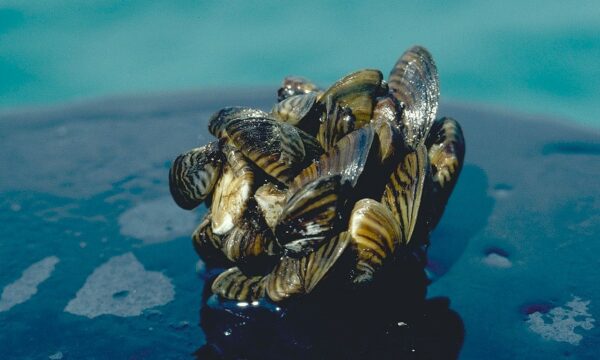Over two years have now passed since the Tohoku earthquake rent the seafloor 40 miles off the coast of Japan. The 9.03 magnitude quake – the largest in Japan’s history – triggered a staggeringly destructive tsunami which cost the lives of over 15,000 people.
Aside from the human tragedy of the disaster, the tsunami has had another, quite unexpected, effect: the transport of invasive species across the globe. Plants and animals from the north-west Pacific are now washing up over 8000 miles away on North American beaches, sparking fears that a wave of ecological invasions could be threatening coastal environments the length of the continent.
How have these organisms managed to travel so far? Such was the force of the tsunami as it tore into docks, boats and buildings on the Japanese coast that an estimated 1.5 million tons of debris was washed out to sea. This was not just the usual plastic waste that pollutes the Pacific Ocean; individual blocks of steel and concrete weighing over 100 tons have been sighted drifting off the coast of Hawaii and North America. Flotsam this large provides a substrate for sedentary coastal life and can shield species from the worst of oceanic conditions. Individual species regularly make similar transits attached to the hulls of boats.
However, what has surprised ecologists in this instance is the number of species that are washing up after 15 months adrift. Whilst whole communities are not turning up on American shores – larger and more mobile animals in particular have long since been washed away – species are certainly arriving en masse in North America. For example, a pier from Misawa port in Japan was harbouring over 100 species when it beached in Oregon in June 2012.

A pier from Misawa port, covered in non-native kelp, that washed up in Oregon in June 2012.
Source: Oregon Parks and Recreation Department
“To date, more than 150 Japanese species have been found arriving alive on the debris”, says Prof Jim Carlton, founding editor of Biological Invasions, who is investigating the incoming organisms. And although “it is the individual species that pose a risk, whether they arrive as a member of a large community or singularly”, the sheer number arriving at once is a cause for concern.
The cast of castaways onboard the flotsam make for a veritable Who’s Who of invasive species. Amongst the various oysters, starfish, molluscs, barnacles and worms all hitching a ride, one species causing particular worry is Undaria pinnatifida, also known as Asian kelp. This alga, native to the Japanese coast, has already invaded ecosystems as far apart as Australia, Europe and Argentina. Fast to establish and quick to grow, it out-competes other algal species by blocking out the sunlight. It has been found in large numbers on the debris and – to make matters worse – individuals are in surprisingly good shape: most are still producing spores after more than a year afloat.
Another unwelcome stowaway is the Japanese shore crab, Hemigrapsus sanguineus. This animal has already invaded large stretches of the eastern seaboard of the USA, where its longevity, high reproductive potential and unfussy diet have caused it to take over ecosystems within a decade, to the detriment of native biodiversity.
The sudden influx of so many potentially invasive species such as these poses a real concern to North American ecologists, who now face the daunting task of locating debris landing sites and cataloguing any species they find there. Once established, many of these organisms are notoriously difficult to eradicate, so any that look set to invade must be dealt with quickly and effectively. The debris from the Tohoku tsunami serves as a reminder to us to always remain alert to the threat of biological invasions, no matter how unexpected or unlikely their arrival.
You can find out more about the invasive species washing up on the US coast – and many more besides – at CABI’s open access Invasive Species Compendium. Datasheets on invasive species include information on their biology and ecology, native and introduced range and any available methods for their prevention and control.
David Mountain
Content Editor, Compendia
References:
http://www.nature.com/news/tsunami-triggers-invasion-concerns-1.12538
http://earthfix.kcts9.org/water/article/tsunami-invasives/
http://ajw.asahi.com/article/globe/feature/tsunami/AJ201301130015
Many thanks to Prof Jim Carlton for his help with this article.
Related News & Blogs
5 invasive species to look out for in the US
The presence of invasive species poses a significant hazard to many native environments and species found in the United States (US). They lead to significant expenses in agriculture, forestry, and recreation. Once out of control, they can destroy entir…
26 February 2024




